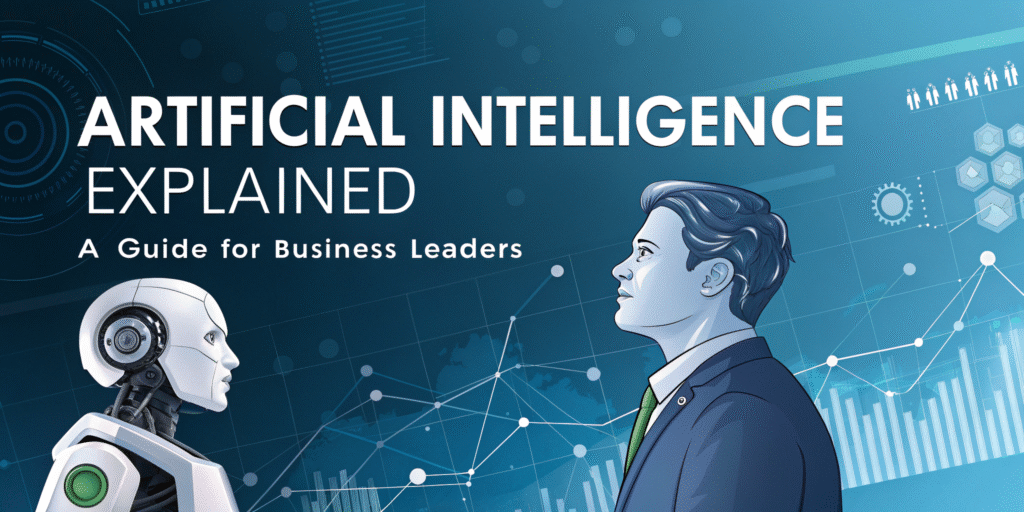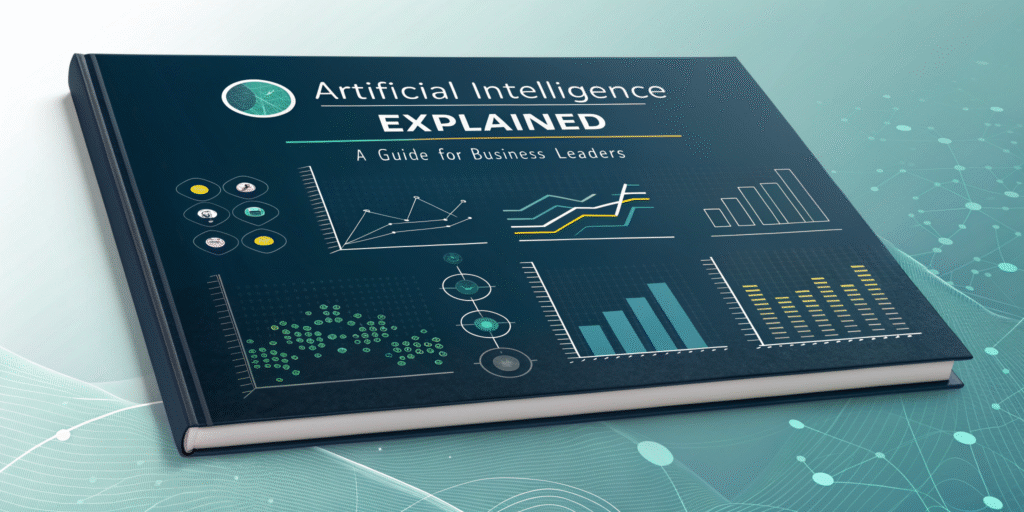
Introduction: Unlocking the Power of AI for Your Business
From self-driving cars to personalized shopping recommendations, artificial intelligence is no longer a topic confined to science fiction. It’s a present-day reality reshaping every industry. For entrepreneurs, marketers, and content creators, understanding AI is no longer optional—it’s a critical business imperative. This guide cuts through the jargon to provide a clear, practical artificial intelligence explained for professionals ready to harness its potential for growth and innovation.
Table of Contents
- The History & Evolution of AI
- Who Needs to Understand AI?
- Key AI Concepts Explained
- The Business & Marketing Potential of AI
- Best Practices for Adopting AI
- Challenges & Limitations of AI
- The Future Outlook of AI
- Conclusion: Your AI Journey Starts Now
The History & Evolution of AI
The dream of creating intelligent machines is centuries old, but the formal field of AI was born in 1956 at the Dartmouth Workshop. This event marked the beginning of a journey through “AI springs” (periods of optimism) and “AI winters” (periods of setback).
Key milestones define this evolution:
- 1950s-60s: The Dawn of AI: Early programs solved algebra problems, creating immense optimism.
- 1980s: The Rise of Expert Systems: AI entered commercial use by mimicking human experts.
- 1990s-2000s: Data-Driven Advances: The internet era enabled machine learning to flourish.
- 2010s-Present: The Deep Learning Revolution: Powered by neural networks, this era brought us generative AI and today’s breakthroughs.
Who Needs to Understand AI?
A practical understanding of AI is crucial for specific roles:
- Entrepreneurs & Business Leaders: To identify opportunities for automation and innovation.
- Marketers & Advertisers: For hyper-personalized campaigns and predictive analytics.
- Content Creators & Strategists: To leverage tools for ideation, writing, and SEO.
- Product Managers: To build smarter products with features like recommendation engines.
Essentially, any professional aiming to future-proof their career benefits from this knowledge.
Key AI Concepts Explained
Demystifying the jargon is the first step to understanding AI. Here’s a breakdown of the core hierarchy.
Artificial Intelligence (AI)
AI is the broad field focused on creating machines capable of intelligent behavior.
Machine Learning (ML)
A subset of AI, ML allows systems to learn from data without explicit programming.
- Supervised Learning: Models learn from labeled data (e.g., classifying emails as spam).
- Unsupervised Learning: Models find patterns in unlabeled data (e.g., customer segmentation).
Deep Learning
This subset of ML uses neural networks for complex tasks.
- Natural Language Processing (NLP): Understanding and generating human language.
- Computer Vision: Interpreting visual information from images and videos.
Generative AI
The latest frontier, generative AI creates new, original content like text, images, and code.
The Business & Marketing Potential of AI
AI’s real value lies in its practical applications. Here’s how it transforms business:
- Enhanced Customer Experience: Use AI-powered chatbots for 24/7 support and recommendation engines for personalization.
- Data-Driven Decision Making: Analyze vast datasets to predict trends and inform strategy.
- Hyper-Personalized Marketing: Deliver targeted messages and offers at scale to boost conversions.
- Operational Efficiency: Automate repetitive tasks like invoice processing to free up human resources.
- Content Creation at Scale: Generate blog posts, social media content, and visuals quickly with generative AI.
Best Practices for Adopting AI
Implement AI successfully with these strategies:
- Start with a Problem, Not a Technology: Identify a specific business challenge before seeking an AI solution.
- Focus on Data Quality: Ensure your data is clean and relevant, as AI models depend on it.
- Pilot Small-Scale Projects: Test AI in one department to demonstrate value and learn lessons.
- Upskill Your Team: Train employees to collaborate effectively with AI tools.
- Consider Ethics and Bias: Implement guidelines to ensure fair and transparent AI use.
Challenges & Limitations of AI
AI is powerful but not without its hurdles:
- Data Dependency and Bias: Biased data can lead to discriminatory outcomes.
- The “Black Box” Problem: Complex models can be opaque, making it hard to understand decisions.
- High Implementation Costs: Custom solutions require significant investment in talent and infrastructure.
- Lack of Creativity and Common Sense: AI excels at pattern recognition but lacks genuine human understanding.
The Future Outlook of AI
The AI landscape is evolving rapidly. Expect these trends:
- More Ubiquitous AI: Integration into everyday tools will make AI invisible yet powerful.
- Advancements in Generative AI: Models will become more sophisticated and multi-modal.
- Rise of AI Regulation: Governments will introduce rules for privacy, bias, and safety.
- Human-AI Collaboration: The focus will shift to partnerships where AI handles analytics and humans provide creativity.

Conclusion: Your AI Journey Starts Now
Understanding artificial intelligence is the key to unlocking its transformative potential. From improving customer experiences to driving operational efficiency, AI offers tangible benefits for forward-thinking businesses. By starting with a clear strategy, prioritizing data quality, and fostering a culture of learning, you can leverage AI to stay ahead of the competition. The future is here—take the first step today and integrate AI into your growth plan.